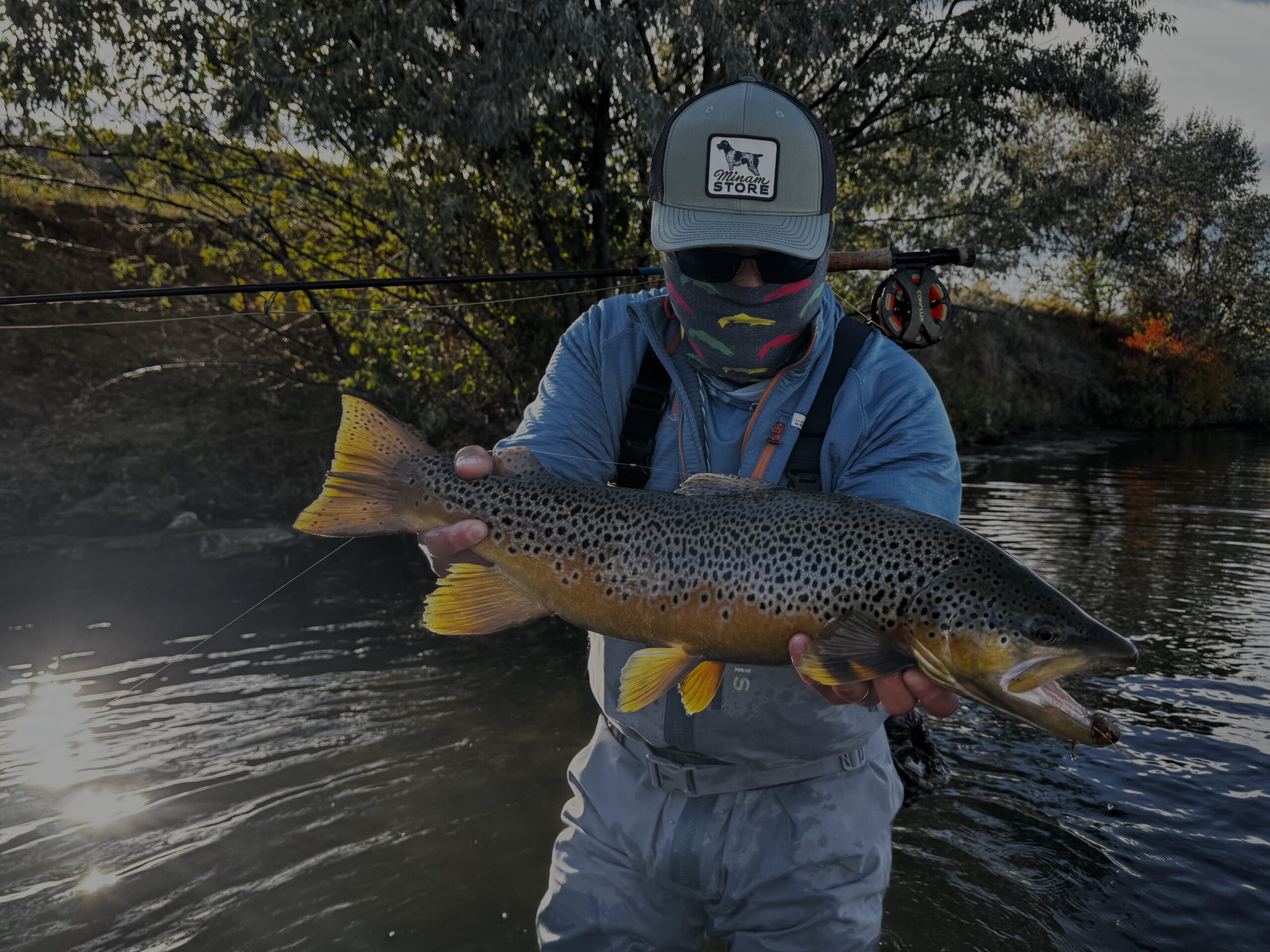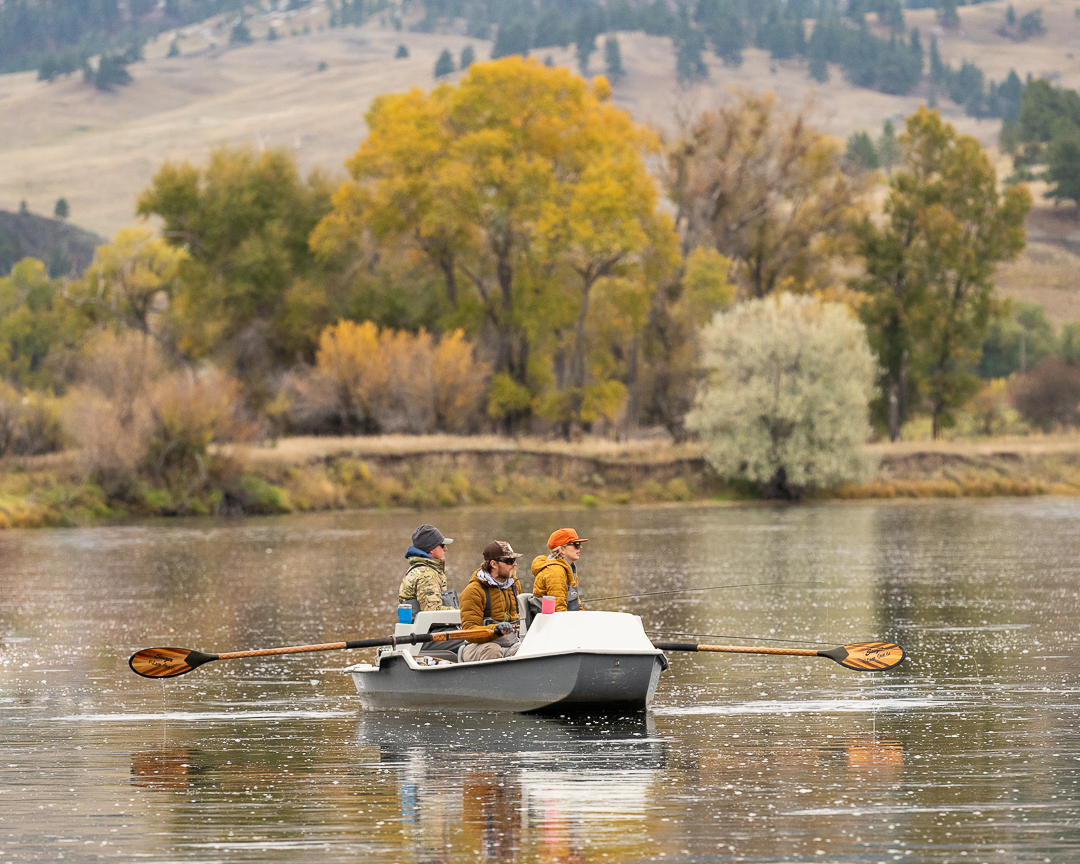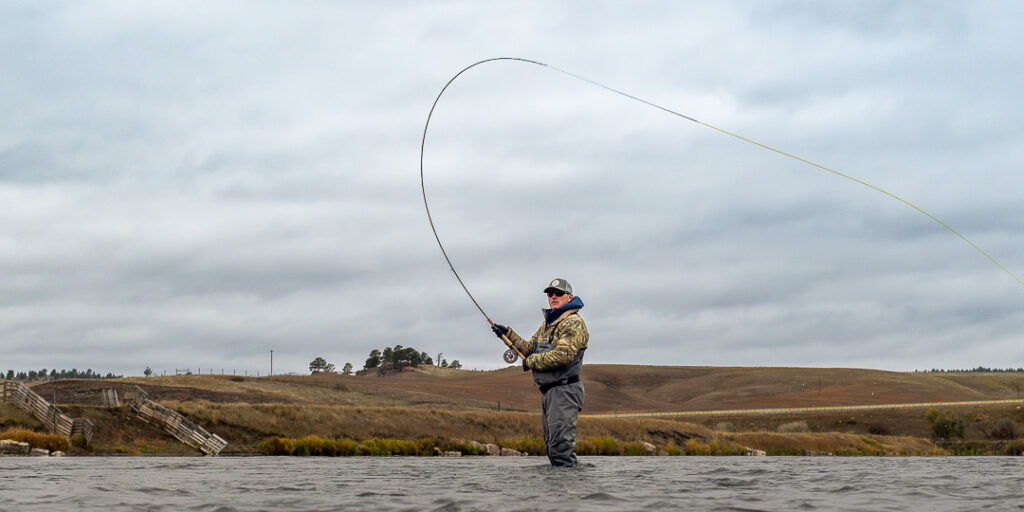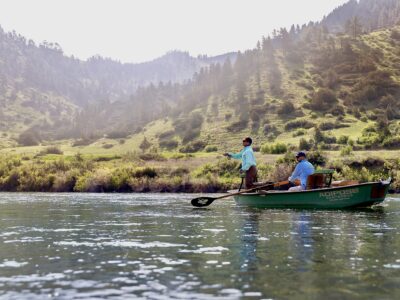The Missouri River isn’t just a fishery; it’s an experience. From its bug-rich waters to its striking landscapes, this tailwater exemplifies what makes Montana’s fly fishing so legendary. Formed at the confluence of three famous rivers—the Madison, Jefferson, and Gallatin. It’s size and grandeur are matched only by its significance in history, as it played a vital role in the Lewis and Clark’s expedition. Today, the river continues to captivate adventurers and fly fishers with its untamed beauty and exceptional blue-ribbon fishing opportunities.
What Makes Fly Fishing the Missouri River Special?
Several factors contribute to the Missouri River’s status as a premier tailwater:
- Prolific Insect Hatches: Throughout the year, the river teems with insect activity, making it a haven for dry fly enthusiasts, nymphers, and even streamer junkies. Prolific hatches of Caddis, Pale Morning Dun, Trico Mayflies and midges are staples on the Mighty Mo.
- Consistency: A tailwater fishery with stable outflows and consistent temperatures ensure year-round fishing opportunities, unlike many rivers that are subject to runoff and seasonal extremes.
- Accessibility: The river’s proximity to Helena, Great Falls, and Bozeman makes it easily accessible for anglers. Public access points and boat ramps are plentiful, allowing for both wade and drift boat easy fishing access.
- Diverse Fishing Styles: Whether you prefer sight casting dry flies to pods of rising trout, fishing nymphs through deep runs, or swinging with trout spey for aggressive trout, the Missouri River offers it all.
- Scenery: Beyond the fishing, the river’s scenery, wildlife and geology is second to none. Towering canyon walls, rolling prairie, and iconic big skies make every moment on the water memorable.

Trout Species on the Missouri River
This mighty Missouri boasts some of the highest wild trout densities in Montana. Rainbows are the most abundant trout species on the Missouri below Holter Dam. These fish have a steady diet of sowbugs, scuds, midges, caddis, and pale morning dun. Rainbows here are strong, chunky, and often full of attitude. Brown trout are less numerous than rainbows , but what they lack in numbers, they make up for in character. Brown trout tend to be solitary and love structure: undercut banks, shallow flats, where they can ambush unsuspecting prey. Large brown trout often favor bigger meals, think crayfish, baitfish, and even smaller trout.

Each season brings Its own delights
Spring: Spring fly fishing the Missouri River isn’t really a season, it’s more like roulette. Layer up and enjoy the beginning of the fishing season. The river awakening from its winter slumber. As temperatures rise, hatches become more prolific, and trout become increasingly active, eagerly feeding on emerging insects.
Summer: Warm weather brings longer days, comfortable temperatures, and some of the river’s most exciting hatches of the year. Caddis, Pale Morning Duns, terrestrials, and Tricos keep both trout and anglers busy from dawn until dusk. Early mornings often bring pods of rising fish sipping spent mayflies, while afternoons call for tossing hoppers. As the sun sets, caddis fill the air, offering another chance to fool hungry trout before the light fades. Summer on the Missouri truly showcases the river at its finest.
Fall : Autumn casts a spell of tranquility over the Missouri River. The crowds thin, and the landscape transforms into a kaleidoscope of vibrant colors. Cooler temperatures trigger a resurgence of insect activity, with blue-winged olives and midges dominating the menu. It’s a season of quiet and the chance to land some of the river’s largest trout before winter sets in.
Winter: The colder months may seem like an unlikely time to fish, but they often offer something many anglers crave, solitude and the chance to connect with the river in its quietest season. With less pressure, winter can be one of the most rewarding times to target trophy trout. Winter is also great time to break out the Trout Spey and swing flies to hungry trout. Those who brave the chill are often rewarded with deliberate takes from some of the biggest fish of the year.

Plan Your Missouri River Fly Fishing Adventure
Whether you’re an experienced angler looking to headhunt trophy trout or a beginner eager to learn to fly fish, the Missouri River has something for everyone. This legendary Montana tailwater offers year-round opportunities thanks to its steady flows, prolific hatches, and strong populations of wild rainbow and brown trout. From casting dry flies to sipping trout on grassy flats to drifting nymphs through deep seams, every day on the “Mighty Mo” brings something new. Add in the views of Montana’s big sky country, and it’s easy to see why anglers from around the world make the pilgrimage here season after season.
Ready to experience world-class fly fishing on the Missouri River?

